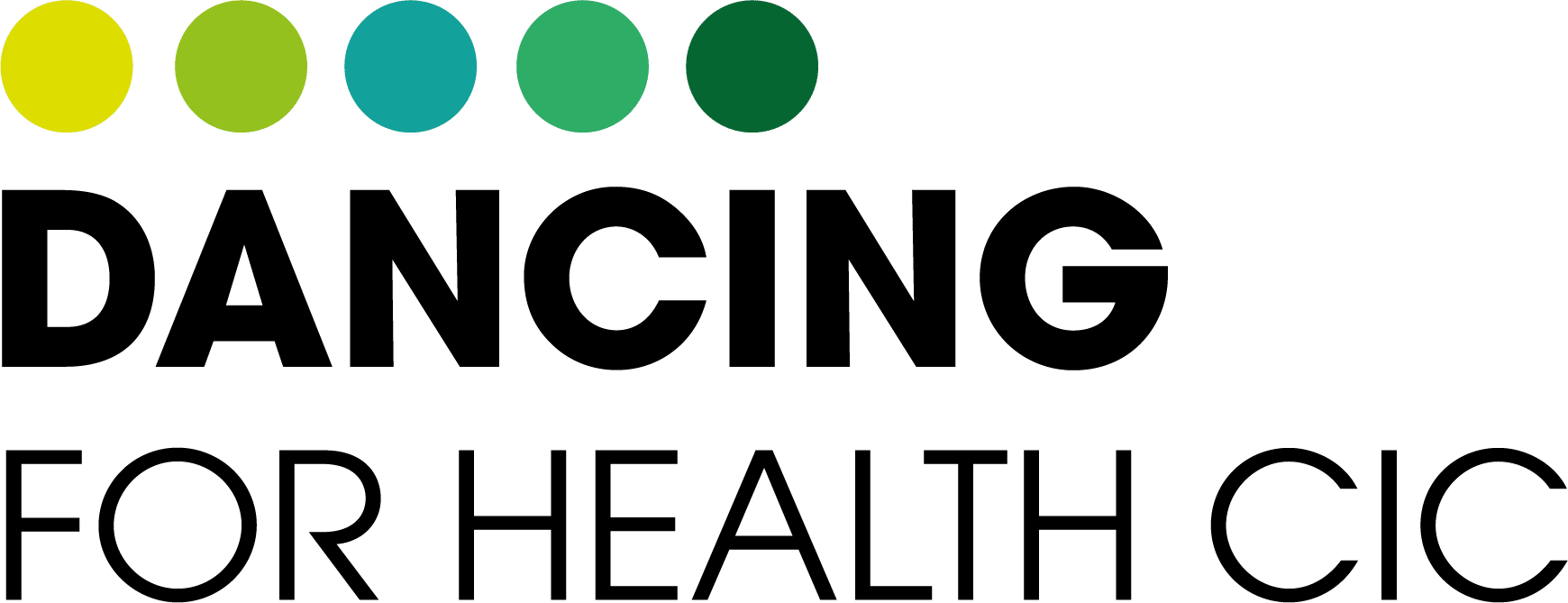Dancing has many proven physical, social and emotional benefits to health. It is a multidimensional activity that contributes positively to many aspects of a persons overall health. Dancing also boosts happiness and mental health. Psychologically dancing offers the opportunity to be with others, work off stress, fatigue, raise self esteem, heighten energy, motivation, mood and generally provide an enjoyable time. Increasing evidence suggests that dancing may serve as an alternative function in people suffering mobility impairments and that dancing can help with improved pain management and accepting physical impairments.
Dancing for Health CIC continues to find new ways, techniques and creates programmes to assist people with various health issues, whether they are suffering from depression or stress to recovering cancer patients or the terminally ill. The company creates a full package of health, well-being and fitness through safe, bespoke ‘Dancing for Health’ programmes, to enable all participants to dance their way to a better lifestyle.
Physical health benefits
• Generally keeping fit and managing body weight
• Increases bodily control and awareness
• Improving balance, co-ordination, agility and posture
• Improving muscular tone, strength and flexibility and keeping joints healthy
• Improving condition of lungs and heart. Stimulates circulation and blood flow
• Improving bone density, reducing risk of osteoporosis
• Improving cognitive functioning, reducing risk of dementia
• Reduces pain and helps to release body tensions
• Helps with physical impairments
Coping strategies
• Concentrates the mind on enjoying the moment, offering a therapeutic distraction.
• helps to forget worries, problems and negative thoughts which reduces stress, depression and helps to overcome difficult times
• Helps to get patients started on the journey of recovery and regaining their quality of life
Emotional health benefits
• Helps express emotions
• Makes you feel happy, pleased or proud
• Helps you feel released
• Reduces negative feelings
• Something positive to look forward to or feeling positive after the dancing
Social benefits
• dancing is a social activity, therefore improves social skills
• Facilitates getting together with friends, meeting new acquaintances which elicits feelings of affiliation.
• Intensifies communication and builds closer relations.
• Stimulates sympathy for other people.
Self esteem benefits
• improving self confidence, self esteem and general well-being.
• Helps to be in harmony with oneself
Benefits for partners
Normally a patient goes through treatments and therapies on their own, the Dancing for Health programme offers the opportunity for the patient’s partner to join them in a physical activity together.
• Offers an opportunity for the patients partner, family member or friend to build on their social and emotional connections and in some cases where perhaps relationships have suffered, to help reconnect, rebuild and grow those relationships.
• Offers relatives and friends the opportunity to feel useful and offer practical support for patients in a fun and beneficial way
• Takes them away from the roles of patient and carer. Offers a temporary distraction from the more difficult and distressing aspects of care. Puts them in an environment that promotes partnership working in order to make the dance enjoyable and beneficial.
• Offers relatives and friends an opportunity to join the patient in a physical activity and be an active participant in the process to increase the quality of life of the patient and really enjoy being in a moment together.
• An activity that they can take away and continue to benefit by using at home.
